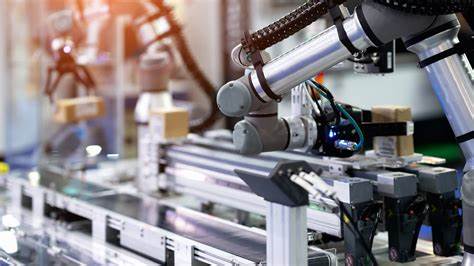From Automation to Augmentation: How Industry 5.0 is Redefining Manufacturing
The landscape of manufacturing is undergoing a significant transformation as we transition from the principles of Industry 4.0 to the emerging focus of Industry 5.0.
While Industry 4.0 emphasised automation and the integration of digital technologies into manufacturing processes, Industry 5.0 shifts the spotlight towards augmentation, fostering a harmonious collaboration between humans and machines.
Evolution from Industry 4.0 to 5.0
Industry 4.0 brought a revolution by embedding automation and data exchange into manufacturing through cyber-physical systems, the Internet of Things, and cloud computing. The central aim was to streamline operations, reduce human intervention, and enhance efficiency.
However, as we pivot to Industry 5.0, the emphasis broadens to include the critical role humans play alongside machines, leveraging the unique capabilities of both to drive innovation and adaptability.
Key Differences: Automation vs Augmentation
The shift from automation to augmentation marks a fundamental change. Automation focuses on machines performing tasks independently, effectively reducing human involvement in repetitive and labour-intensive activities.
In contrast, augmentation enhances human capabilities. It is about empowering workers with intelligent systems, using machines to support and elevate human decision-making and creativity rather than replace it. 
Benefits of Human-Machine Collaboration
The synergy between humans and machines in Industry 5.0 offers numerous benefits. It enhances problem-solving capabilities by combining human intuition with machine precision and data processing power.
This partnership can lead to more innovative solutions and a more flexible production environment. Moreover, it increases operational efficiency as machines handle repetitive tasks, allowing human workers to focus on more strategic roles that require creativity and complex decision-making.
Examples of Successful Augmentation
Real-world examples of successful augmentation in manufacturing often involve collaborative robots, known as cobots, working alongside human workers on production lines.
These cobots are designed to assist with precision tasks, reducing the physical strain on workers and lowering the risk of human error.
In some factories, augmented reality tools are used to provide workers with real-time data overlays, enhancing their ability to assemble complex products accurately and efficiently.
Recent innovations led by major players within the AI industry is enabling the deployment of short run, cost effective robot solutions.
Nvidia the leader in AI compute technology with their market leading Cosmos world model is enabling robots at small scale with the creation of synthetic data for training.
Humans are a critical component in this process as the technology evolves.
Future Implications for the Workforce and Productivity
The rise of Industry 5.0 heralds significant implications for the workforce. While there is concern about machines replacing jobs, the focus on augmentation offers a more optimistic outlook.
It suggests a shift in job roles rather than outright displacement, with new opportunities emerging in managing and optimising machine-human interfaces.
This transformation can lead to an upskilled workforce, where employees are empowered to engage in higher-level tasks, fostering job satisfaction and productivity.
For productivity, the combination of human creativity and machine efficiency promises a more resilient and adaptive manufacturing environment.
This integrative approach can lead to faster innovation cycles and a more responsive supply chain, ultimately benefiting businesses and consumers alike.
In conclusion, Argon & Co.’s expertise, particularly through its IRIS practice, positions it uniquely to guide organisations through this transformative phase.
By understanding and addressing the challenges involved in the transition to Industry 5.0, businesses can fully realise the potential of human-machine collaboration, ensuring a competitive edge in the ever-evolving manufacturing sector.
If you’re ready to embrace the future of manufacturing, contact us today to explore how we can help you navigate the transition to Industry 5.0 and unlock the full potential of human-machine collaboration.



